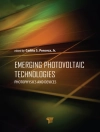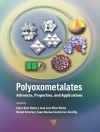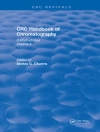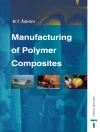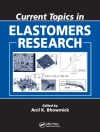Learn the fundamental concepts that underlie the physics of multiphase flow and transport in porous media with the information in Essentials of Multiphase Flow in Porous Media, which demonstrates the mathematical-physical ways to express and address multiphase flow problems. Find a logical, step-by-step introduction to everything from the simple concepts to the advanced equations useful for addressing real-world problems like infiltration, groundwater contamination, and movement of non-aqueous phase liquids. Discover and apply the governing equations for application to these and other problems in light of the physics that influence system behavior.
Tabela de Conteúdo
1. Setting the Stage.
1.1 Introduction.
1.2 Phases and Porousmedia.
1.3 Grain and Pore Size Distributions.
1.4 The Concept of Saturation.
1.5 The Concept of Pressure.
1.6 Surface Tension Considerations.
1.7 Concept of Concentration.
1.8 Summary.
1.9 Exercises.
2. Mass Conservation Equations.
2.1 Introduction.
2.2 Microscalemass Conservation.
2.3 Integral Forms Ofmass Conservation.
2.4 Integral Theorems.
2.4.1 Divergence Theorem.
2.4.2 Transport Theorem.
2.5 Point Forms Ofmass Conservation.
2.6 Themacroscale Perspective.
2.6.1 The Representative Elementary Volume.
2.6.2 Global and Local Coordinate Systems.
2.6.3 Macroscopic Variables.
2.6.4 Definitions Of Macroscale Quantities.
2.6.5 Summary Of Macroscale Quantities.
2.7 The Averaging Theorems.
2.7.1 Spatial Averaging Theorem.
2.7.2 Temporal Averaging Theorem.
2.8 Macroscalemass Conservation.
2.8.1 Macroscale Point Forms.
2.8.2 Integral Forms.
2.9 Applications.
2.9.1 Integral Analysis.
2.9.2 Point Analysis.
2.10 Summary.
2.11 Exercises.
3. Flow Equations.
3.1 Introduction.
3.2 Darcy’S Experiments.
3.3 Fluid Properties.
3.4 Equations of State for Fluids.
3.4.1 Mass Fraction.
3.4.2 Mass Density and Pressure.
3.4.3 Fluid Viscosity.
3.5 Hydraulic Potential.
3.5.1 Hydrostatic Force and Hydraulic Head.
3.5.2 Derivatives of Hydraulic Head.
3.6 Single Phase Fluid Flow.
3.6.1 Darcy’S Law.
3.6.2 Hydraulic Conductivity and Permeability.
3.6.3 Derivation of Groundwater Flow Equation.
3.6.4 Recapitulation of the Derivation.
3.6.5 Initial and Boundary Conditions.
3.6.6 Two-Dimensional Flow.
3.7 Two-Phase Immiscible Flow.
3.7.1 Derivation of Flowequations.
3.7.2 Observations on the Pc – Sw Relationship.
3.7.3 Formulas for The Pc – Sw Relationship.
3.7.4 Observations of the Kà Rel – Sw Relationship.
3.7.5 Formulas for the Kà Rel – Sw Relation.
3.7.6 Special Cases of Multiphase Flow.
3.8 The Buckley-Leverett Analysis.
3.8.1 Fractional Flow.
3.8.2 Derivation of the Buckley-Leverett Equation.
3.8.3 Solution of the Buckley-Leverett Equation.
3.9 Summary.
3.10 Exercises.
4. Mass Transport Equations.
4.1 Introduction.
4.2 Velocity in the Species Transport Equations.
4.2.1 Direct Approach.
4.2.2 Rigorous Approach.
4.2.3 Distribution Approach.
4.2.4 Summary.
4.3 Closure Relations for the Dispersion Vector.
4.4 Chemical Reaction Rates.
4.5 Interphase Transfer Terms.
4.5.1 Kinetic Formulation.
4.5.2 Equilibriumformulation.
4.5.3 Summary: Kinetic Vs. Equilibrium Formulations.
4.6 Initial and Boundary Conditions.
4.7 Conclusion.
4.8 Exercises.
5. Simulation.
5.1 1-D Simulation of Air-Water Flow.
5.1.1 Drainage in a Homogeneous Soil.
5.1.2 Drainage in a Heterogeneous Soil.
5.1.3 Imbibition in Homogeneous Soil.
5.2 1-D Simulation of Dnapl-Water Flow.
5.2.1 Primary Dnapl Imbibition In Homogeneous Soil.
5.2.2 Density Effect.
5.2.3 Dnapl Drainage in Homogeneous Soil.
5.2.4 Secondary Imbibition of Dnapl in Homogeneous Soil.
5.2.5 Secondary Drainage in Homogeneous Soil.
5.2.6 Primary Imbibition in Heterogeneous Soil.
5.3 2-D Simulation of Dnapl-Water Flow.
5.3.1 Dnapl Descent into a Water-Saturated Reservoir.
5.4 Simulation Of Multiphase Flow And Transport.
5.4.1 1-D Two-Phase Flow and Transport.
5.4.2 2-D Two-Phase Flow and Transport.
5.5 2-D Single-Phase Flow and Transport.
5.5.1 Base-Case.
5.5.2 Effect of Inflow.
5.5.3 Impactofwell Discharge.
5.5.4 Effect of Adsorption.
5.5.5 Effect of a Low Transmissivity Region.
5.5.6 Effect of a High Transmissivity Region.
5.5.7 Effect of Rate of Reaction.
5.6 3-D Single-Phase Flow and Transport.
5.7 2-D Three-Phase Flow.
5.8 Summary.
6. Select Symbols.
Sobre o autor
George F. Pinder, PHD, is the Director of the Research Center
for Groundwater Remediation Design and also a Professor of Civil
and Environmental Engineering, Mathematics and Statistics, and
Computer Science at the University of Vermont. He has served on the
editorial board of numerous journals including the International
Journal for Numerical Methods in Fluids. He has published
extensively in the fields of groundwater flow and transport
modeling and has written on the use of such models in combination
with optimization methods in addressing problems of environmental
optimal design.
William G. Gray, PHD, is a Professor of Environmental Sciences
and Engineering at the University of North Carolina at Chapel Hill.
He has over thirty years of research and teaching experience in
environmental modeling and the physics of flow in porous media. He
has published widely on various aspects of environmental modeling
and simulation and has served as editor and on the editorial boards
of leading journals in his field. He is a Fellow of the American
Geophysical Union.


